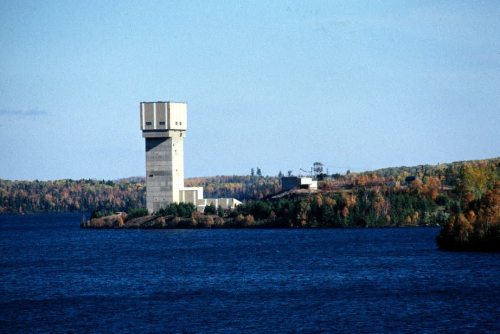

The forces of grievance and resentment weigh in
Update: Our pal Joe got a spanking about the state of the Ely economy in the Strib, Friday, September 6th (it will be in the September 7th paper edition). You know, Jack and Ben, maybe you can get Bill Forsberg, Sr. to be on your radio show! Nah, probably not.
An Ely area resident named Joe Baltich wrote a commentary that ran in the Strib on September 1st. It dripped with contempt for the latte-sipping, chardonnay-swilling, brie-eating Twin Citians — apparently Joe’s customers, since he is an outfitter — those truculent juveniles who are so unwilling to let Joe crap in his own nest. Why, says Joe, we know a lot more about this than you do!
Then, Joe, perhaps you can explain this:
Despite what the “environmental” detractors are spewing, we can have clean water and a mine 3,000 to 4,000 feet underground. (I’ll bet you didn’t know that it is not going to be an open-pit mine.)
So, Joe, what is done with the stuff that is “mined?” It’s brought to the surface using mine shafts, kind of like this one. Right Joe?

Then what’s done with it? It’s sorted into a pile of sulfide-bearing waste rock — most of it — and the rest is crushed and chemically treated to extract the good stuff. The bad stuff, called tailings, goes into a basin that is continuously covered with water to keep it from blowing away.
Both the waste rock pile — the Brimstone Mountain — and the tailings basin are sources of heavy metal and sulphuric acid runoff.
Let’s focus on the tailings basin for a moment. Too little water in the basin? Then the tailings are exposed to air (and the oxygen in it) and create sulphuric acid. Too much water in the basin? Then the basin dam or berm is overtopped and the polluted water becomes regular old groundwater and runs, you guessed it, downhill. Downhill, in this case, is into the Boundary Waters. As has been discussed here before, the BWCAW’s waters cannot buffer much acid.
Guess where the water would come from the keep the tailings wet if rainfall wasn’t sufficient to do it?
We won’t even discuss a dam or berm failure, because that never happens.
Anyway, the mine shaft tower in the photo above is from a copper nickel mine at Lake Shebandowan that operated for a while, and now is in perpetual care. In a post about the other potential despoiler of the wilderness, PolyMet, I wrote this about Shebandowan:
A common approach to dealing with tailings, which PolyMet [and Twin Metals] also proposes, is to construct a tailings basin and — I’m not kidding here — cover the tailings with water. I truly could not believe that somebody would take rock that only requires water and a little air to make sulphuric acid and, yes, cover it with water. This is genius.
But this is what our Neighbors To The North do at Lake Shebandowan for an abandoned underground sulfide mine there. Scroll down to page 141 of this report to see. And they are by no means the only ones. When water gets too high in the tailings basin, when it rains a lot or you have some snow melt, the excess flows into the spillway — which is a wonderful term, don’t you think — where it is carefully monitored by Ontario’s Industrial Sewage Works — I’m not making this up; I couldn’t — on its way to Lake Superior. No mention is made in the report about the sulphuric acid that leaks directly into the groundwater. I guess that never happens. They did line the basin with plastic, after all.
If the water gets too low, I suppose they pump some out of Lake Shebandowan to fill it up! Well, they have to, because exposing wet tailings to air will make sulphuric acid extra fast. Sorry smallmouth bass in Lake Shebandowan!
So where does the spillway for Twin Metals underground mine but above ground tailings basin go? Birch Lake? You can see that the environmental danger here is much greater than even Shebandowan; at least (!) Lake Superior is a big toilet. Birch Lake and the BWCA? Not so much.
We should ring up the Ontario Industrial Sewage Works to see how it’s done. Nah, probably not. It’s even more supine than our DNR.
One last point: Baltich wrote, “We mined this very same rock for 88 years before the BWCAW.”
Not true. It isn’t the same rock. The stuff coming out of the ground from an iron mine is much different than a copper nickel mine.
(The photo at the top of the story is from the Strib commentary and says it’s from Ely during the good times, ten years ago. The BWCA existed ten years ago. Mining around Ely did not.)
Thanks for your feedback. If we like what you have to say, it may appear in a future post of reader reactions.

